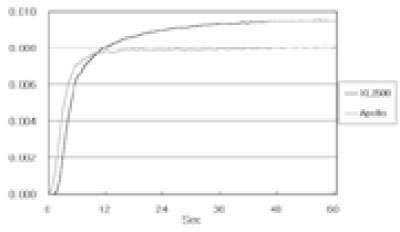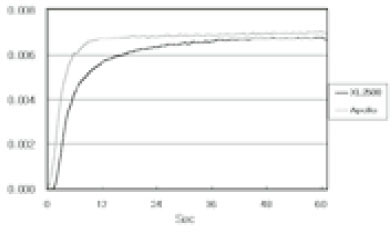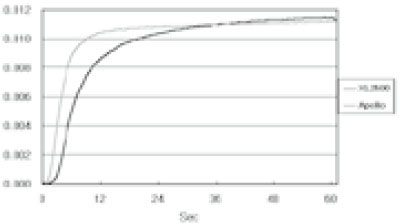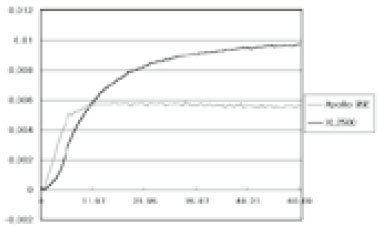J Korean Acad Conserv Dent.
2002 Sep;27(5):488-492. 10.5395/JKACD.2002.27.5.488.
Comparison of linear polymerization shrinkage in composites and compomer polymerized by plasma arc or conventional visible light curing
- Affiliations
-
- 1Department of Conservatine Dentistry, School of Dentistry, Yonsei University, Korea.
- KMID: 1987305
- DOI: http://doi.org/10.5395/JKACD.2002.27.5.488
Abstract
- The purpose of this study was to evaluate the effectiveness of plasma arc curing (PAC) unit for composite and compomer curing. To compare its effectiveness with conventional quartz tungsten halogen (QTH) light curing unit, the polymerization shrinkage rates and amounts of three composites (Z100, Z250, Synergy Duo Shade) and one compomer, that had been light cured by PAC unit or QTH unit, was compared using a custome made linometer. The measurement of polymerization shrinkage was performed after polymerization with either QTH unit or PAC unit. In case of curing with the PAC unit, the composite was light cured with Apollo 95E for 6s, the power density of which was recorded as 1350 mW/cm2 by Coltolux Light Meter. For light curing with QTH unit, the composite was light cured for 30s with the XL2500, the power density of which was recorded as 800 mW/cm2 by Coltolux Light Meter. The amount of linear polymerization shrinkage was recorded in the computer every 0.5s for 60s. Ten measurements were made for each material. The amount of linear polymerization shrinkage for each material in 10s and 60s which were cured with PAC or QTH unit were compared with t test. The amount of polymerization shrinkage in the tested materials were compared with 1way ANOVA with Duncan's multiple range test. As for the amounts of polymerization shrinkage in 60s, there was no difference between PAC unit and QTH unit in Z250 and Synergy Duo Shade. In Z100 and Dyract AP, it was lower when it was cured with PAC unit than when it was cured with QTH unit (p<0.05). As for the amounts of polymerization shrinkage in 10s, there was no difference between PAC unit and QTH unit in Z100 and Dyract AP. The amounts of polymerization shrinkage was significantly higher when it was cured with PAC unit in Z250 and Synergy Duo Shade (p<0.05). The amounts of polymerization shrinkage in the tested materials when they were cured with QTH unit were Z250 (6.6um) < Z100 (9.3um), Dyract AP (9.7um) < Synergy Duo Shade (11.2um) (p<0.05). The amount of polymerization shrinkage when the materials were cured with PAC unit were Dyract AP (5.6um) < Z100 (8.1um), Z250(7.0um) < Synergy Duo Shade (11.2um) (p<0.05).
Figure
Reference
-
1. Sakaguchi RL, Peters MC, Nelson SR, Douglas WH, Poort HW. Effects of polymerization contraction in composite restorations. J Dent. 1992. 20:178–182.
Article2. Attin T, Buchalla W, Kielbassa AM, Helwig E. Curing shrinkage and volumetric changes of resin-modified glass ionomer restorative materials. Dent Mater. 1995. 11:359–362.
Article3. Kinomoto Y, Torii M, Takeshige F, Ebisu S. Comparison of polymerization contraction stresses between self- and light-curing composites. J Dent. 1999. 27:383–389.
Article4. Brännström M, Vajinovic O. Response of the dental pulp to invasion of bacteria around three filling materials. ASDC J Dent Child. 1976. 43:83–89.5. Davidson CL, de Gee AJ, Feilzer A. The competition between the composite-dentin bond strength and the polymerization contraction stress. J Dent Res. 1984. 63:1396–1399.
Article6. Jorgensen KD, Asmussen E, Shimokobe H. Enamel damages caused by contracting restorative resins. Scand J Dent Res. 1975. 83:120–122.
Article7. Davidson CL, de Gee AJ. Relaxation of polymerization contraction stresses by flow in dental composites. J Dent Res. 1984. 63:146–148.
Article8. Hay JN, Shortall AC. Polymerization contraction and reaction kinetics of three chemically activated restorative resins. J Dent. 1988. 16:172–176.
Article9. de Gee AJ, Feilzer AJ, Davidson CL. True linear polymerization shrinkage of unfilled resins and composites determined with a linometer. Dent Mater. 1993. 9:11–14.
Article10. Peutzfeldt A, Sahafi A, Asmussen E. Characterization of resin composites polymerized with plasma arc curing units. Dent Mater. 2000. 16:330–336.
Article11. Stritikus J, Owen B. An in vitro study of microleakage of occlusal composite restorations polymerized by a conventional curring light and a PAC curing light. J Clin Pediatr Dent. 2000. 24:221–227.12. Munksgaard EC, Peutzfeldt A, Asmussen E. Elution of TEGDMA and BisGMA from a resin and a resin composite cured with halogen or plasma light. Eur J Oral Sci. 2000. 108:341–345.
Article13. Smith DL, Schoonover IG. Direct filling resins: dimensional changes resulting from polymerization shrinkage and water sorption. JADA. 1953. 46:540–544.
Article14. Puckett AD, Smith R. Method to measure the polymerization shrinkage of light-cured composites. J Prosthet Dent. 1992. 68:56–58.
Article15. Park SH, Krejci I, Lutz F. A Comparison of microhardeness of resin composites polymerized by plasma arc or conventional visible light curing. Oper Dent. 2002. 27:30–37.16. Lee IB. A new method-Real time measurement of the initial dynamic volumetric shrinkage of composite resins during polymerization shrinkage. J Korean Acad Conserv Dent. 2001. 26:134–140.
- Full Text Links
- Actions
-
Cited
- CITED
-
- Close
- Share
- Similar articles
-
- Comparison of the shear bond strength of brackets in regards to the light curing source
- The amounts and speed of polymerization shrinkage and microhardness in LED cured composites
- Polymerization shrinkage of composite resins cured by variable light intensities
- Polymerization ability of several light curing sources on composite resin
- Polymerization shrinkage kinetics of silorane-based composites






